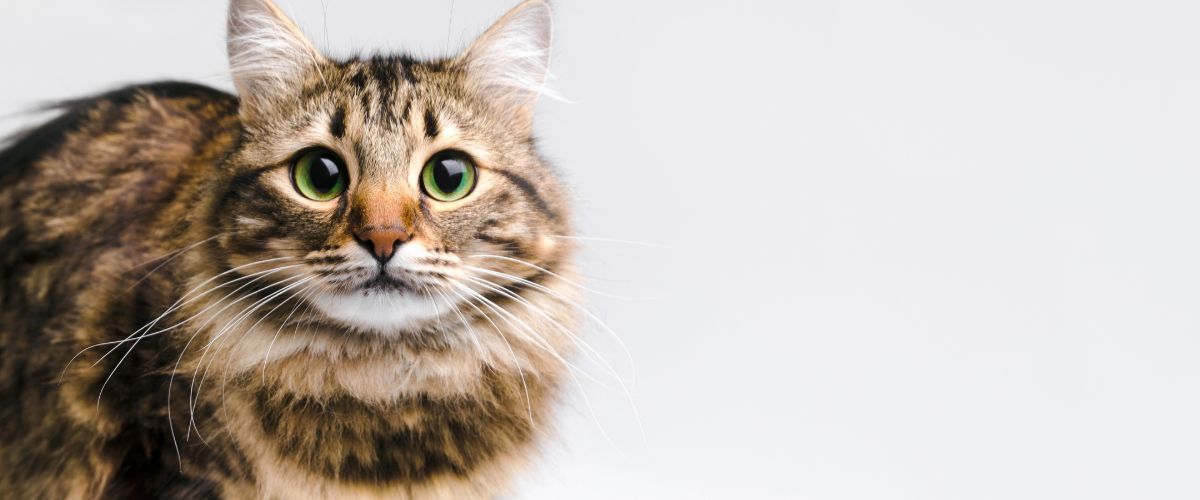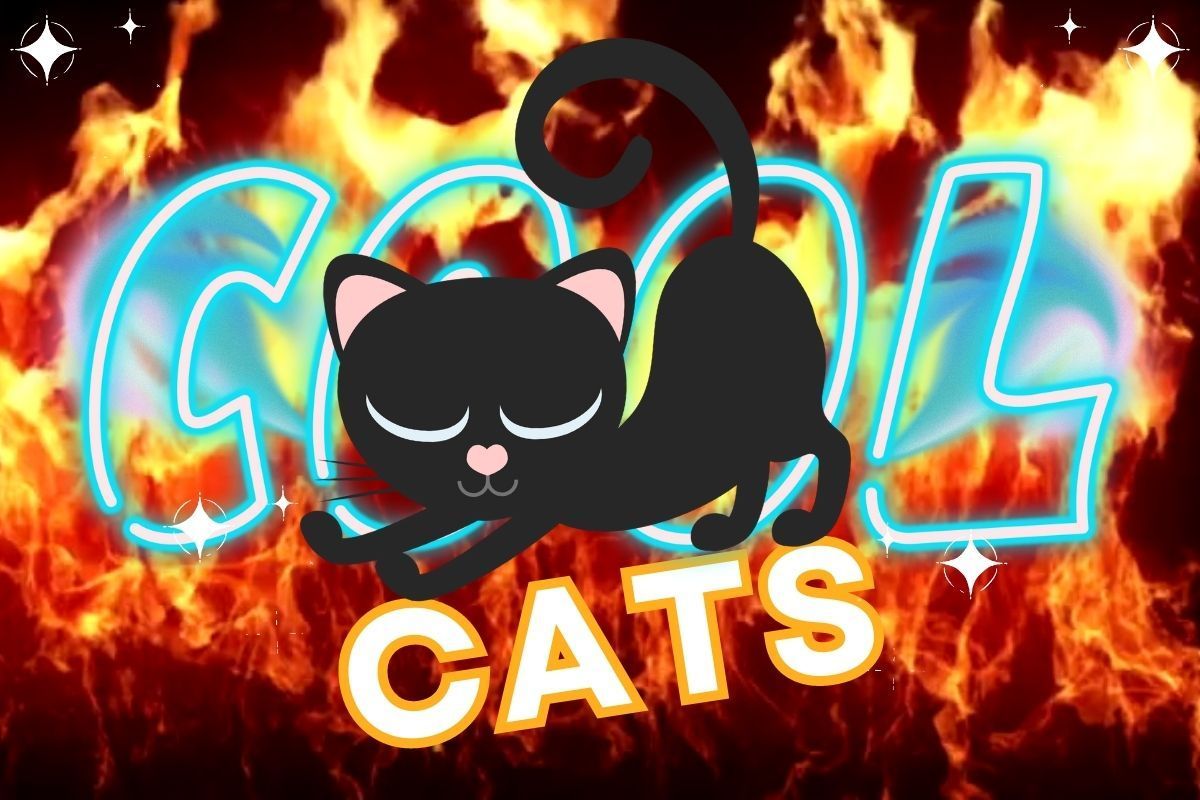DECODING THE LANGUAGE OF MEOWS
In the mysterious world of feline communication, there exists a universal sound that has captivated and puzzled cat lovers for generations – the meow. This soft, melodious, and often insistent vocalization is a cornerstone of our feline companions' communication repertoire. But have you ever wondered, what are cats saying when they meow?
Cats are renowned for their enigmatic behaviour, and meowing is just one facet of their intricate language. Whether it's a gentle, affectionate purr, an impatient demand, or a plaintive cry, each meow seems to carry a unique message. In this exploration of our furry friends' vocal expressions, we'll delve into the fascinating world of cat meows, unravelling the secrets behind these seemingly simple utterances.
Join us on a journey to decipher the subtle nuances of feline communication, uncover the reasons behind your cat's meows, and gain a deeper understanding of your feline friend's thoughts and emotions. Welcome to our blog, where we unravel the mystery of "Meow-ese" and decode what your cats are truly saying when they meow.
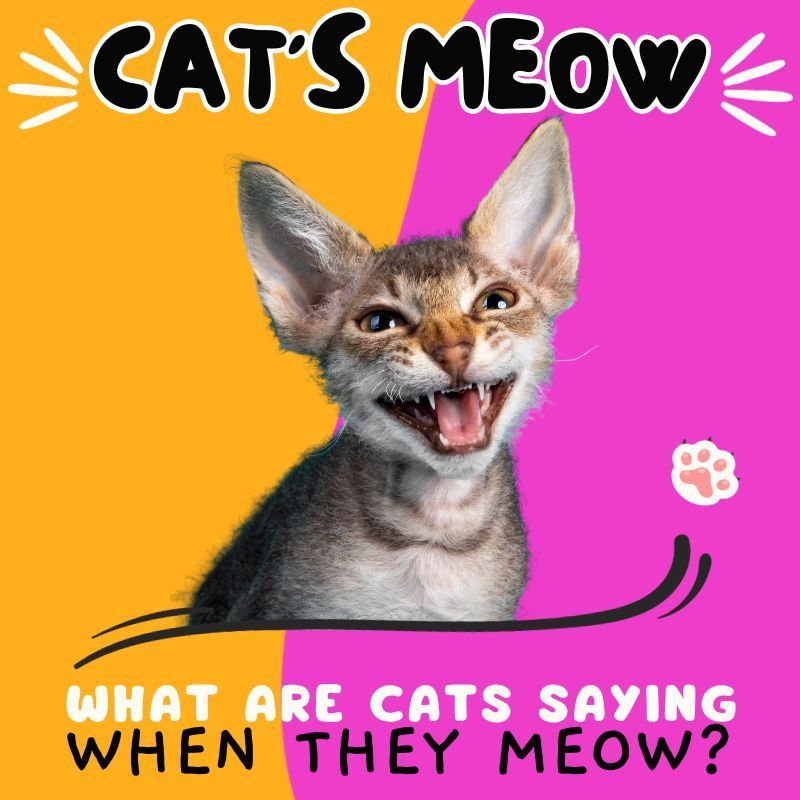
THE MANY FACES OF MEOWS
Cats have a unique and varied language that they use to communicate with their human companions and fellow felines. While they employ an array of gestures, body language, and vocalizations, it's the meow that often captures our attention and curiosity.
Whether it's a soft, musical trill or a persistent, demanding yowl, each meow seems to carry a distinct message. So, what are cats saying when they meow? Let's embark on a journey to decode this fascinating aspect of feline communication.
The first thing to understand about cat meows is that there is no one-size-fits-all translation. Cats use meowing in a multitude of ways, each with its own context and meaning. Here are some common types of meows and their potential interpretations:
5 TYPES OF MEOWS AND THEIR POTENTIAL INTERPRETATIONS
- The Greeting Meow:
When your cat approaches you and greets you with a gentle, short meow, it's often a sign of recognition and affection. They might be saying, "Hello, I'm happy to see you!"
- The Demanding Meow:
A persistent, insistent meow is often a call for attention or something specific. Your cat could be telling you, "I'm hungry," "Pet me," or "Open that door, please!"
- The Purr-like Meow: Some cats combine a purring sound with their meows, which can indicate contentment or an invitation for affection.
- The Anxious Meow:
A high-pitched, repetitive meow may signal discomfort, fear, or distress. Your cat might be saying, "I'm scared" or "I don't like this situation."
- The Playful Meow: Cats often use a distinct meow when they're in a playful mood. It's like an invitation to engage in some interactive fun.
THE CONTEXT MATTERS
Deciphering what your cat is saying when they meow involves considering the context and their body language. The same meow can mean different things based on the situation. For example, a hungry meow might be accompanied by your cat leading you to their empty food bowl. A demanding meow might be paired with pacing and a paw on your leg, indicating they want to go outside.
Learn Your Cat's Unique Language
Every cat has its unique meowing style and preferences, and part of being a responsible cat owner is learning to understand your individual feline friend. Spend time observing your cat's behaviour, meows, and accompanying body language. Over time, you'll become better at deciphering their specific communication patterns.
When to Be Concerned
While meowing is a normal part of cat communication, excessive or sudden changes in meowing can be a sign of an underlying health issue or discomfort. If your cat's meowing becomes uncharacteristic or concerning, it's essential to consult with a veterinarian to rule out any medical problems.
The next time your cat graces you with a meow, take a moment to consider the context and their accompanying cues. You might just find yourself more in tune with your feline friend's needs, desires, and emotions. Remember, the language of meows is as unique as your cat, and by paying attention and learning to listen, you can strengthen the bond between you and your furry companion. Happy decoding!
IN Conclusion
In the world of feline communication, meows are like the sweet melodies that cats use to serenade us with their desires, emotions, and needs. While it may sometimes feel like we're trying to unravel an intricate and enigmatic musical composition, understanding what cats are saying when they meow is a rewarding journey that deepens our bond with these mysterious yet beloved creatures.
We've learned that cats possess a diverse range of meows, each carrying its own unique message. They greet us, they demand our attention, they express anxiety or joy, and they invite us to play. Their vocalizations are far from one-dimensional; they're a multi-layered language that transcends the mere utterance of sounds.
As cat lovers, we have the privilege of becoming fluent in this intricate dialect. By observing our feline companions closely, listening to their meows, and considering the context, we can better understand their individual needs and feelings. In doing so, we bridge the gap between two species, forging a stronger connection based on mutual understanding and empathy.
However, it's important to remember that while meowing is a vital aspect of feline communication, it's not the only one. Body language, facial expressions, and purring also play significant roles in the conversation. Therefore, the more we pay attention and invest time in learning our cat's entire repertoire, the more we'll be able to provide the care, affection, and environment that our cats need and deserve.
So, the next time your furry friend graces you with a meow, consider it an invitation to a deeper connection. By becoming attuned to their unique language and responding with love and care, you'll not only decode what your cat is saying but also create a harmonious and fulfilling bond with the enigmatic, lovable creatures that share our homes and our hearts. Happy listening, cat lovers!
Thank you for reading this post. We hope that you found it helpful and hope to you visit this page again soon. For more information, fun facts and cute photos, please follow us on social media. 🐱
Disclosure & Disclaimer: Some of the links in this blog may be affiliate links, which means we earn a small commission if you click through and make a purchase. This comes at no additional cost to you but helps support the continued production of content. We only recommend products and services we believe will add value to our audience. The content provided is solely for informational purposes. Any advice provided is based on personal experience and research and may not be suitable for everyone. Before implementing any advice, please consult with a professional to ensure it's appropriate for your specific situation. Thank you for your support.


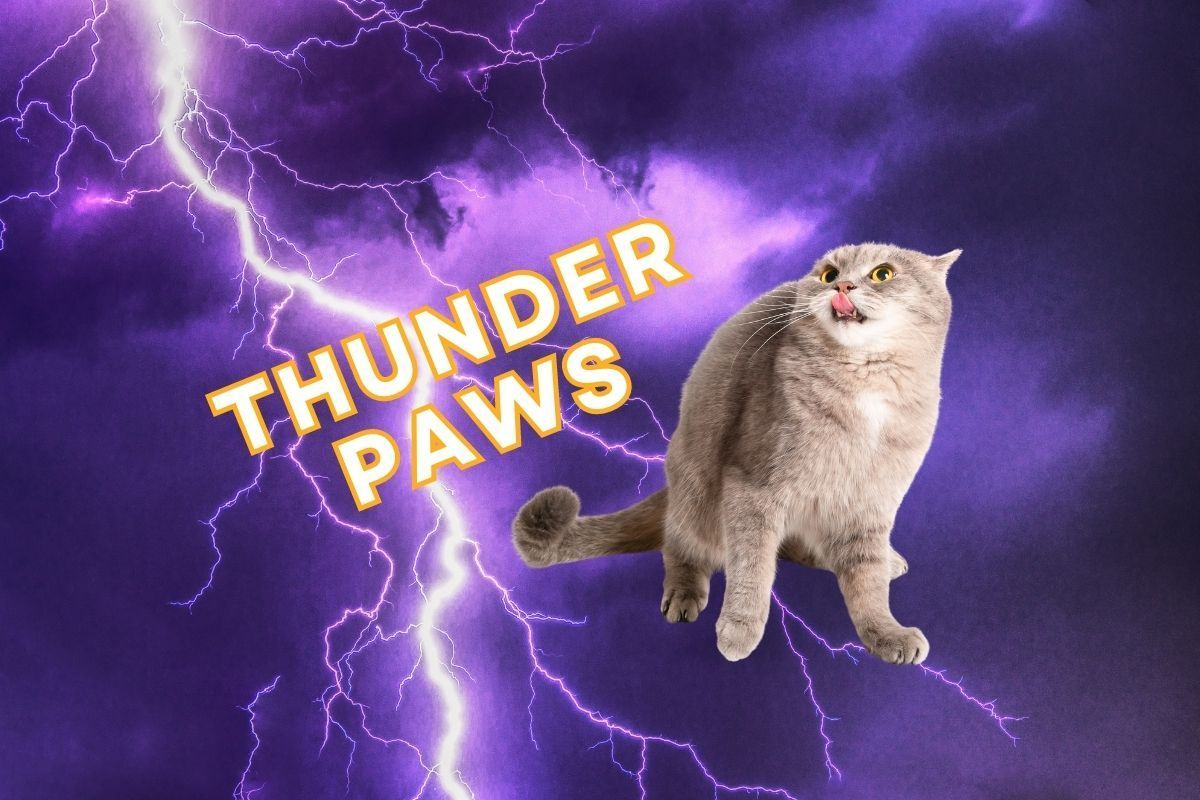
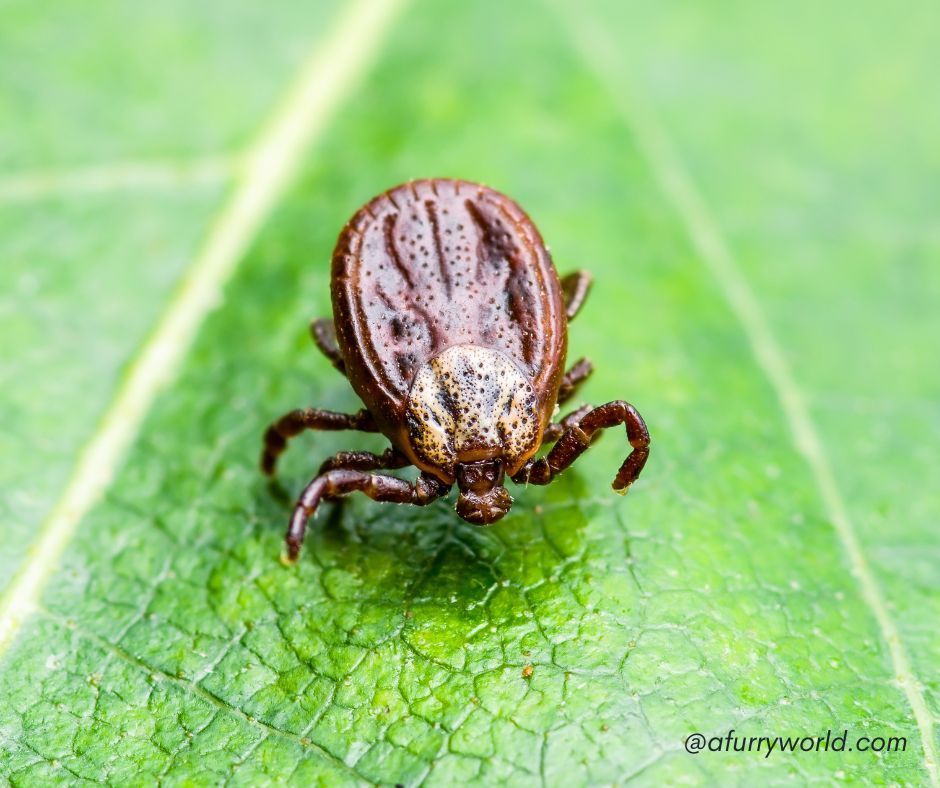
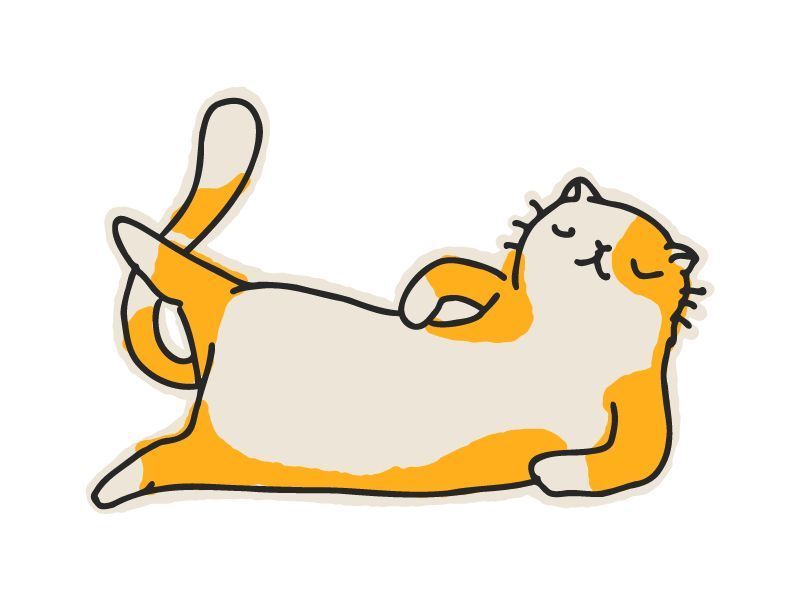

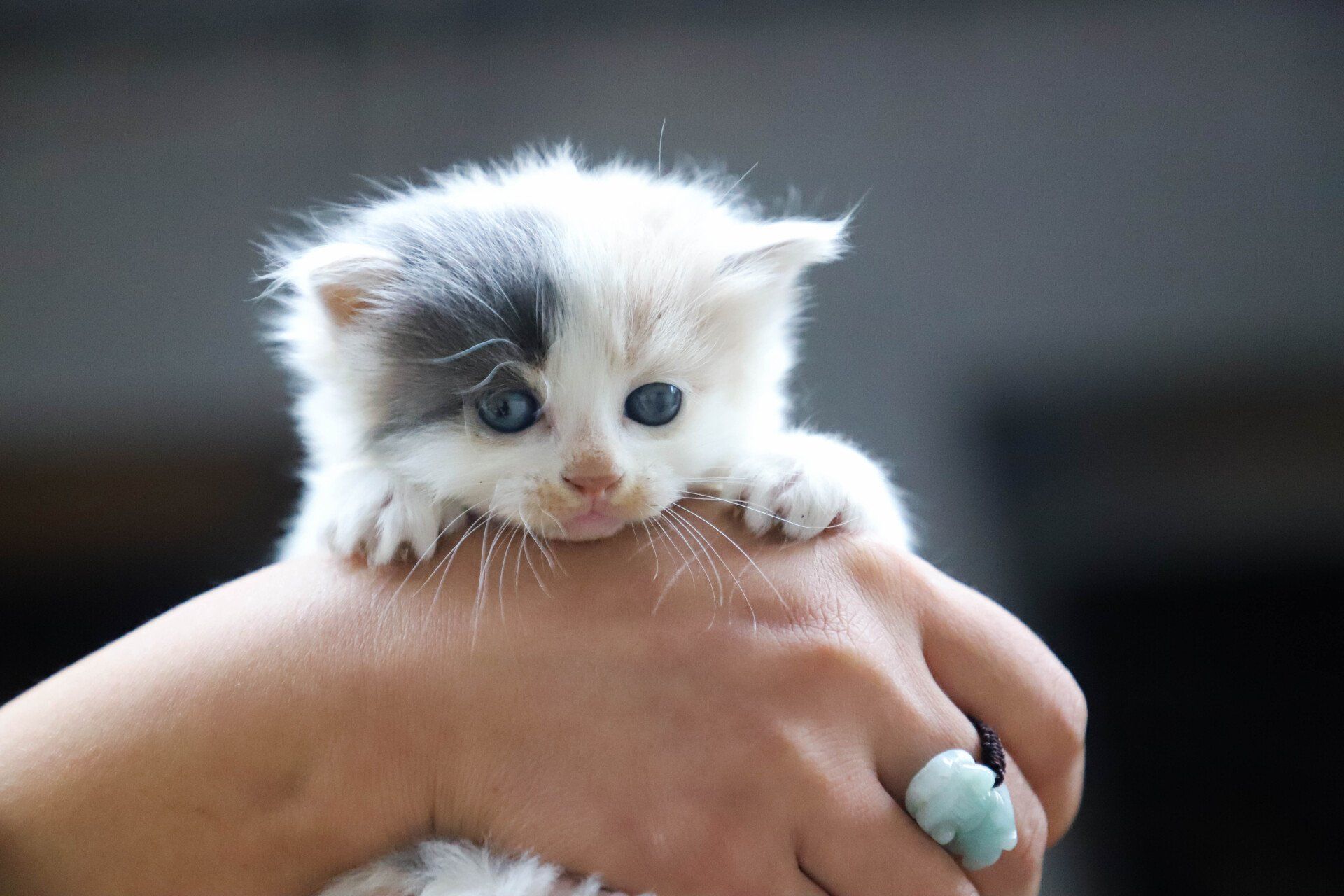

WHY CHOOSE US
Proven track record - CitiKiti - was established in 2003 and when searching the web, speaking with your local vets and visiting our Review Page you will discover that we come highly recommended including in some of the most important areas such as reliability, trustworthiness and knowledge.
Not a search engine - We are a family-run business with a large team of genuine pet lovers. As the team works for us not as individuals you can rest assured that we are accountable and reliable and we will insure that your pet is taken care of even if your booked carer falls ill during an assignment.
First Aid Training - CitiKiti is pleased to work with Vet Helen Dennis (VetMB MA MRCVS) who runs our pet first aid training courses. This insures that our carers are well equipped for and confident in their work even in an emergency situation.
Security Vetted - All CitiKiti sitters are required to obtain a Police Check a copy of which we will be very happy to email to you for your peace of mind.
Insured - For your peace of mind, all CitiKiti carers are fully covered by our industry-standard insurance.
Home Security - having an CitiKiti carer entering your home on a regular basis, taking in post and changing light and blind positioning will help keep that lived-in look.
No Advertising Vehicles or clothing - As part of keeping your pet and home safe we have made the decision NOT to drive advertising vehicles or wear clothing with advertising as this would highlight the fact that you are not at home and, although it would of course be of great benefit to our business to widely advertise our services, we believe that the safety of your cats and your home is more important than our self-promotion.
Recommended by Vets - we are well known among both vets and pet professionals who are happy to recommend and work with us.
Same Designated Carer at no extra cost - when first booking with CitiKiti you will be assigned a Carer. For both your and your pet's comfort and peace of mind, it will be your designated carer who will take care of our pet from then on. This of course with the exception of carers own holiday or sickness in which case you will be informed and your alternative carer will be introduced where at all possible.
Ongoing training - before their first assignment all carers receive in-house training and many of our carers already have experience from vet nursing, animal rescue work as well of course as having pets in their own lives. Many carers also choose to sign up for external certificated courses and training including Cat Behaviour and Cat Health and Welfare.
Free Initial Meeting - all clients are required to fill out a detailed form to help us understand all wishes and requirements to offer the best care possible. We also arrange a face-to-face meeting for you to have a chance to ask any questions you may have and for and your pet to get to know their new friend.
Key Holder Service - we offer to keep hold of your keys in order to make booking your pet care as easy and quick as possible. All you have to do is email us to make a booking request and, once confirmed, we are good to go.
Trusted by Pet Professionals - we are well known among both vets and pet professionals who are happy to recommend and work with us.
Provides care 365 days a year - including weekends, school holidays, bank holidays, Christmas & New Year.
Member of FSB - The Federation of Small Businesses provides us with additional insurance, ongoing support and industry-relevant information helping us keep up-to-date and informed for the benefit of both us and our clients.
Supporter of ICatCare - ICatCare is an international cat charity organisation for the promotion of feline health and well-being. CitiKiti wholeheartedly supports the fantastic work they do. Their website is also an excellent resource for a world of cat-related information.
Sponsors of a Cat Cabin - at Cats Protection www.cats.org.uk click on the videos below to see some of the purry friends at Cat Protection.
Services - Since foundation we have offered a comprehensive range of services to suit our client's requirements. The services and areas we cover include; Cat Sitting in North London N1, N5, N6, N8, N16, NW1 & NW6. We also offer live-in care or house-sitting in North or East London including Islington N1 N5 we can help.
PROFESSIONAL PET CARE
CitiKiti offers professional and reliable holistic cat care service where the emphasis is on, pamper, play and TLC.
We are here to help make you and your CitiKiti’s life together wonderful, stress-free and rewarding during all stages.
SECURITY VETTED & INSURED
CitiKiti offers professional and reliable holistic cat care service where the emphasis is on, pamper, play and TLC.
We are here to help make you and your CitiKiti’s life together wonderful, stress-free and rewarding during all stages.
A LITTLE ABOUT US
Follow Us
CitiKiti Copyright © All rights reserved. Privacy Policy GDPR Terms & Conditions
The contents of this site are the property of CitiKiti and Cat Care London Ltd. No part of this web site may be copied, modified, transmitted, broadcast or reproduced in any form whatsoever without the prior written permission of Cat Care London Ltd. These contents include, but are not limited to, information, documents, graphics, photos, logos and icons, including their design, selection and arrangement.
WHAT WE DO AND WHERE WE DO IT
Our passion is pets and we provider pamper, play and TLC 365 days a year including Bank holidays, Easter, Christmas & New Year.
We understand that deciding whom to entrust with the care of your precious companion is a difficult and possibly even daunting process. Hopefully, our Testimonials and client Reviews will help you feel confident and happy to choose us.
Since our beginnings in 2003, we have offered a comprehensive range of personalised cat care services including cat sitting, house-sitting and cat behaviourist.
We are proud to be recommended by vets and pet professionals as well as consistently receive 5-star reviews from our clients from all over London and beyond.
Your peace of mind and the happiness and safety of your cat is of paramount importance to us and when choosing to become part of our community and trusting us to take care of your precious cat we can reassure you that we are a family-run business with a tight-knit team of pet carers offering total accountability, reliability and genuine cat lovers care.
We are a team of dedicated pet professionals with a great love for pets.
Most of our carers have either long-term working experience with cats and/or professional education in animal care including Vet Nurses, Animal Behaviourists, Pet Hospital Assistants and Pet Bloggers.
All our cat carers are security vetted and public liability insured and we provide thorough in-house cat care training including Cat First Aid to ensure that carers are well equipped and confident cat carers.
Cats are territorial creatures of habit and can find catteries very stressful and upsetting. It is generally agreed by pet professionals that they are most relaxed and comfortable staying in their own homes when "parents" go away for short or long breaks. Travelling to and from catteries can also be stressful for both you and your cat. Our Cat Sitting service means your cat can stay home whenever you are away.
Since the beginning of 2019 CitiKiti has also offered cat behaviour therapy as well. Cat behaviour therapy can help if your cat is urine marking, stressed, anxious, aggressive, destructive or urinating or defecating outside the litter tray. The CitiKiti Cat Behaviourist can also offer advice on getting cats to get along, getting cats and dogs to live together peacefully, and taking care of kittens or older cats. Our Cat Behaviourist offers home consultations in London and in some cases worldwide video consultations work as well.
AREAS WE COVER
Since our beginnings in 2003, we have offered home visit services and the areas we currently cover for our cat sitting and small pet visiting services include: Hoxton, Shoreditch, E2, Bethnal Green, Fish Island, E3, Bow, Hackney Wick, Mile End, E5, Clapton, Hackney Marshes, E8, Hackney, Dalston Kingsland, E9, N1, Islington, Angel, Barnsbury, Canonbury, Clerkenwell, De Beauvoir Town, Hoxton, Pentonville, Shoreditch, N5, Highbury, N6, Highgate, N16, Stoke Newington, Shacklewell.
When going away often one of the worst dilemmas is who do you get to look after your cat. When using our Cat Sitting service, you can enjoy your holidays knowing that your cat feels safe and relaxed and your home is looked after to.
Since our beginning as a Cat Sitter Service in North London Islington, N1 we have taken pride in offering the very best in professional & reliable holistic cat care with an emphasis on pamper, play and TLC. Our Cat Sitters are all dedicated professionals with a great love of cats. Most have either long term working experience with cats and/or professional education in animal care. We are proud to be recommended by vets and pet professionals as well as consistently receive 5 start reviews from our Cat Sitting clients from all over London including East London E3, Bow, Hackney Wick, E8, Hackney, Dalston Kingsland and E9, Victoria Park.
Cats are territorial creatures of habit and can find catteries very stressful and upsetting. It is generally agreed by pet professionals that they are most relaxed and comfortable staying in their own home when "parents" go away for short or long breaks. Travelling to and from catteries can also be stressful for both you and your cat. Our Cat Sitting service means your cat can stay home whenever you are away. CitiKiti offers Cat Sitting and house-Sitting in most parts of Central, North and East London including EC1, Clerkenwell, Finsbury, Hoxton, St Luke’s, N1, Canonbury, Barnsbury.
We offer to look after your cat in your own home for as long or short time as you need. This way not only can you feel happy that your cat is as comfortable, relaxed and well looked after as possible, you also know that your home is being looked after and keeps that lived in look to deter any uninvited guests. Depending on you and your cat’s preference you can choose between daily or twice daily visits or live-in care.
We understand that deciding whom to entrust with the care of your precious feline companion is a difficult and possibly even daunting process. Our Testimonials and client Reviews will help you feel confident and happy to choose CitiKiti as your Cat Sitting Company.
You and your cat will be assigned your own dedicated Cat Sitter and you will have a meeting with him/her before start of visits. During the meeting you can ask any questions you might have and your cat will have a chance to say hello to his/her new best friend ;-) All our Cat Sitters are security vetted and have public liability insurance and we have been trusted in the community since 2003.
At CitiKiti we always do our best to help answer any cat related questions our clients may have. We work closely with other pet professionals including vets and cat groomers enabling us to offer and refer to a wide range of cat related services.
Since the beginning of 2019 CitiKiti offers behaviour therapy as well. Cat behaviour therapy can help if your cat is urine marking, stressed, anxious, aggressive, destructive or urinating or defecating outside the litter tray. The CitiKiti Cat Behaviourist can also offer advice on getting cats to get along, getting cats and dogs to live together peacefully, taking care of kittens or older cats. Our Cat Behaviourist offers home consultations in London, including Richmond, SW19, Chelsea, Wimbledon, Kensington, SW11, Islington, N1, Hampstead. In some cases video consultations work as well and CitiKiti Behaviour Therapy is offered worldwide.
CitiKiti offers Cat Sitting and House-Sitting every day of the year including Bank Holidays, weekends, school holidays and Christmas & New Year.
The areas we cover for Cat Sitting include the below but if you are looking for Cat Sitting in areas that are not listed feel free to contact us and we will see what we can do.
EC1, Clerkenwell, Finsbury, Hoxton, Shoreditch, E2, Bethnal Green, E3, Bow, Hackney Wick, Mile End, E5, Clapton, Hackney Marshes, Lea Bridge, Lower Clapton, Upper Clapton, E8, Hackney, Dalston Kingsland, E9, Victoria Park, N1, Angel, Barnsbury, Canonbury, Clerkenwell, De Beauvoir Town, Hoxton, Islington, Pentonville, Shoreditch, N5, Highbury, N6, Highgate, N8, Crouch End, Hornsey, N10, Muswell Hill, N16, Stamford Hill, Stoke Newington, Shacklewell,N19, Hornsey Rise, Archway, Tufnell Park, NW1, Regents Park, Camden Town, NW3, Hampstead, Swiss Cottage, NW5, Kentish Town.
Scientific name: Felis catus
Size: The average house cat is eight to eleven pounds, but you can have a petite six-pound calico or a big 15-pound Maine Coon cat.
Life span: Indoor cats regularly live to be 15, and some kitties live even longer.
Colours/varieties: There are many different breeds of cats from the hairless Sphynx and the fluffy, puffy Persian to the silvery spotted Egyptian Mau. But the most popular kitties of all are non-pedigree that includes brown tabbies, black-and-orange tortoiseshells, all-black cats, the long hair, striped kitties with white socks and everything in between!
History: Cats were domesticated, or bred to be friendly to humans, sometime between 4,000 and 8,000 years ago, in Africa and the Middle East. Small wild cats started hanging out where humans stored their grain. Can you think of a better place to find mice?! When humans saw cats up close and personal, they began to admire felines for their beauty and grace and the rest is history ;-)
Cat food: cats are obligate carnivores which means they need to eat meat in order to survive. Eating a vegetarian or vegan diet is not an option for your cat. Cats depend on the nutrients found in meat, most notably taurine and arginine. For this reason it is important to feed your cat a quality diet supplemented with a few treats. Ask your vet or pet shop for advice about their range of cat food and treats.

